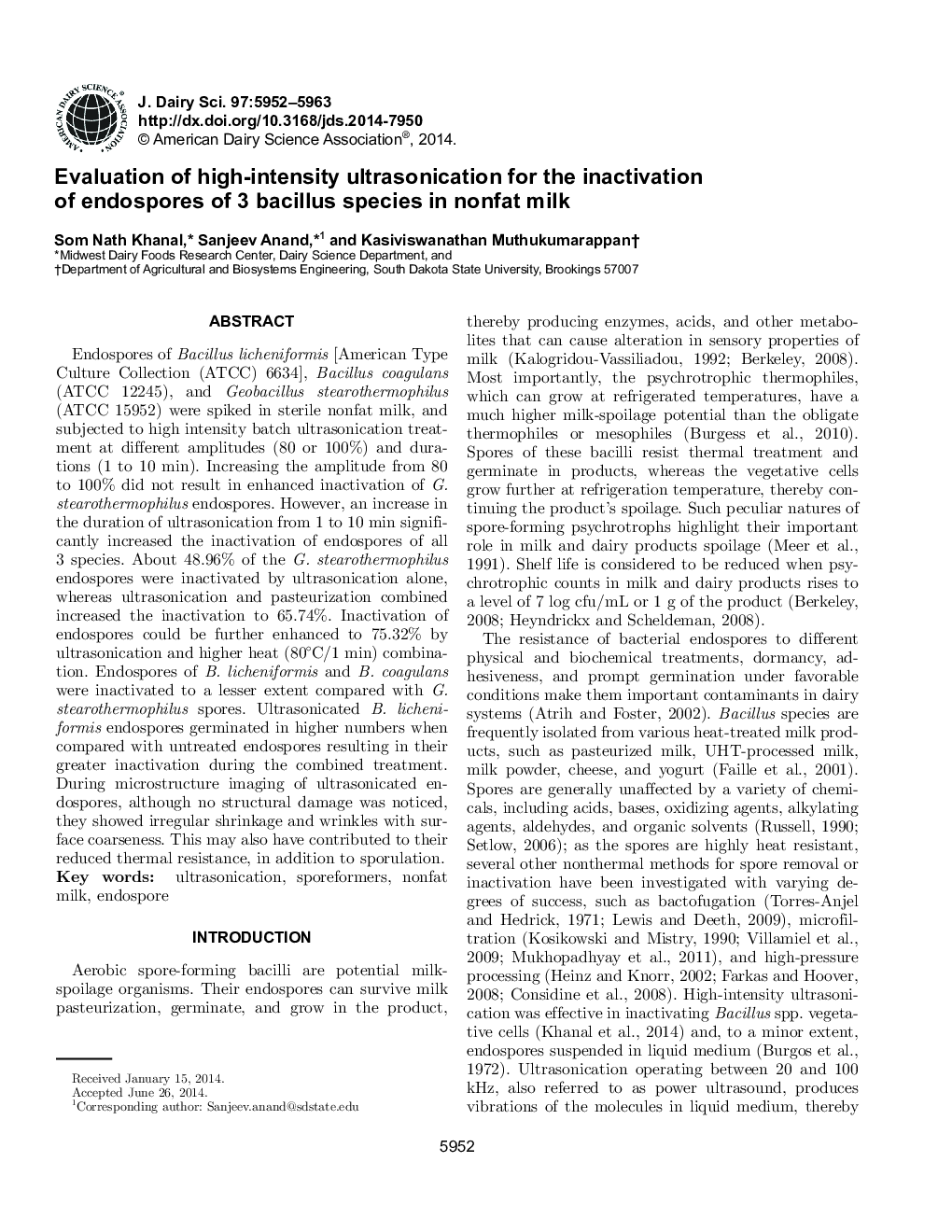| Article ID | Journal | Published Year | Pages | File Type |
|---|---|---|---|---|
| 10975980 | Journal of Dairy Science | 2014 | 12 Pages |
Abstract
Endospores of Bacillus licheniformis [American Type Culture Collection (ATCC) 6634], Bacillus coagulans (ATCC 12245), and Geobacillus stearothermophilus (ATCC 15952) were spiked in sterile nonfat milk, and subjected to high intensity batch ultrasonication treatment at different amplitudes (80 or 100%) and durations (1 to 10 min). Increasing the amplitude from 80 to 100% did not result in enhanced inactivation of G. stearothermophilus endospores. However, an increase in the duration of ultrasonication from 1 to 10 min significantly increased the inactivation of endospores of all 3 species. About 48.96% of the G. stearothermophilus endospores were inactivated by ultrasonication alone, whereas ultrasonication and pasteurization combined increased the inactivation to 65.74%. Inactivation of endospores could be further enhanced to 75.32% by ultrasonication and higher heat (80°C/1 min) combination. Endospores of B. licheniformis and B. coagulans were inactivated to a lesser extent compared with G. stearothermophilus spores. Ultrasonicated B. licheniformis endospores germinated in higher numbers when compared with untreated endospores resulting in their greater inactivation during the combined treatment. During microstructure imaging of ultrasonicated endospores, although no structural damage was noticed, they showed irregular shrinkage and wrinkles with surface coarseness. This may also have contributed to their reduced thermal resistance, in addition to sporulation.
Keywords
Related Topics
Life Sciences
Agricultural and Biological Sciences
Animal Science and Zoology
Authors
Som Nath Khanal, Sanjeev Anand, Kasiviswanathan Muthukumarappan,
